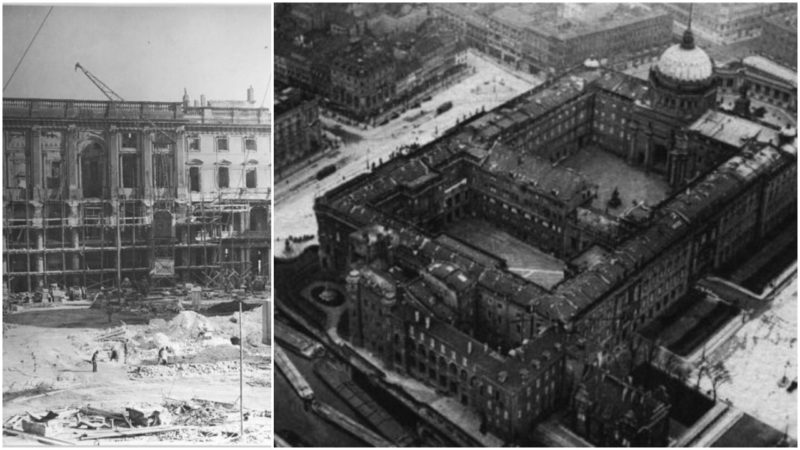The beginnings of this marvelous piece of architecture can be found in the 15th century, although the history of the site runs much deeper. The palace was built in place of a castle that had been erected in order to watch over the Spree River crossing at Cölln: the adjacent town which, in 1770, merged with Berlin.
In 1454 the castle’s chapel, on the order of Frederick II, Elector of Brandenburg, who had just returned from Jerusalem, was richly decorated and made a parish church. The 37th Bishop of Brandenburg, Stephan Bodecker, consecrated this chapel to Erasmus of Formiae, under the order of Pope Nicholas V.
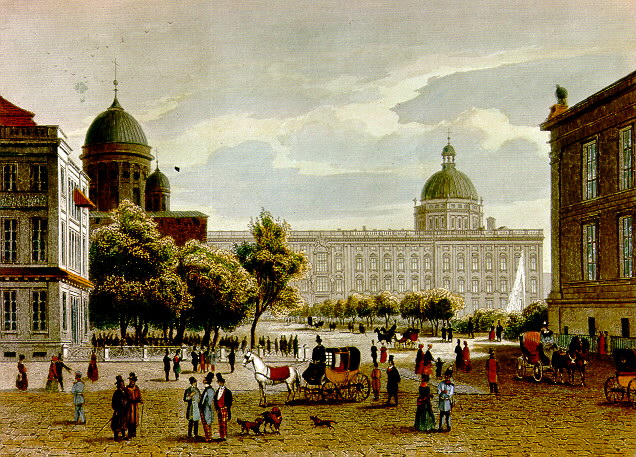
In 1538 the castle was demolished, on the order of Prince-Elector Joachim II Hector of Brandenburg. He instructed master builder Caspar Theiss to erect him a palace worthy of his noble status, in the style of the Italian Renaissance, and thus the palace was built.
Many decades later, after the Thirty Years War, Frederick William, the then-Elector of Brandenburg, further enlarged the palace.
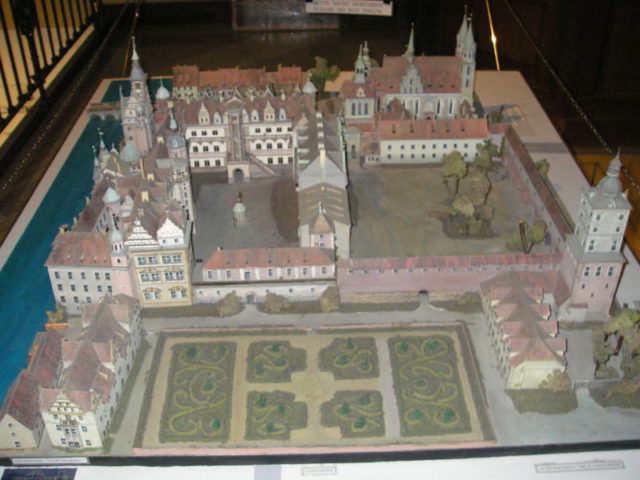
Following the designs of the architect Nicodemus Tessin the Younger, the palace received courtyard arcades, in front of which stood huge columns. Alterations didn’t stop there, and the palace was altered many times after Nicodemus.
Tessin’s successor – architect Johann Nering – carried out many changes, though his work on this palace is still largely unknown. From 1695 to 1699, German architect and master mason Martin Grünberg was responsible for building projects.
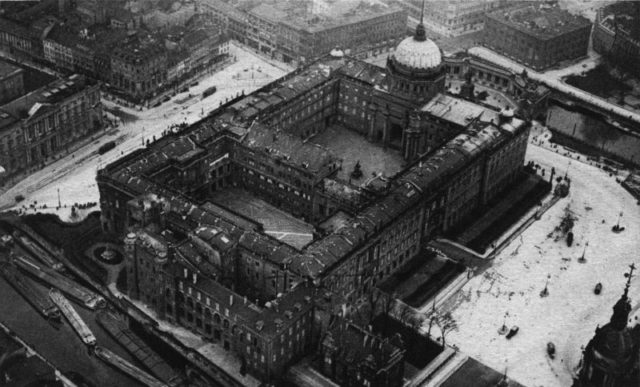
After Grünberg, Frederick I of Prussia – at the time still Elector Frederick III – tasked the German architect and sculptor Andreas Schlüter with redesigning the whole palace in 1699. Schlüter’s initial plan followed the Protestant Baroque style and included a cube-shaped building, surrounding an elaborate courtyard.
In 1706, Johann Friedrich Eosander von Göthe designed a western extension, doubling the overall size of the now heavily altered palace. Göthe even went as far as relocating the main entrance to the new western wing.
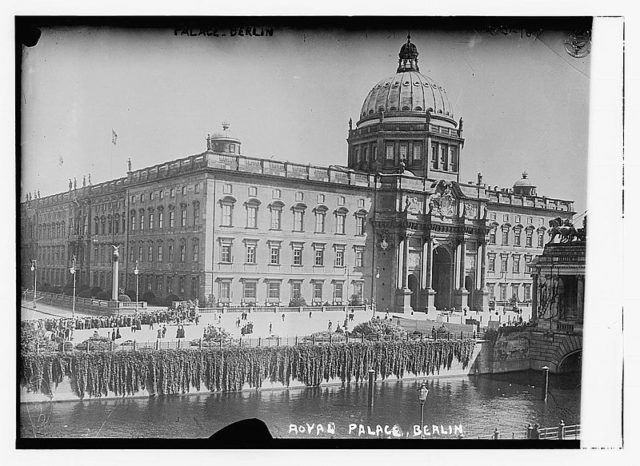
During the period of King William I, the palace was of huge significance to the German Empire. However, in 1894, the Reichstag building was completed and Berlin Palace was overshadowed by it.
In 1918, the German Socialist Republic was declared from a balcony of the palace by German socialist Karl Liebknecht. As a result, the palace no longer served to house nobility: a dramatic change, as if this had been its purpose for the last 400 years.
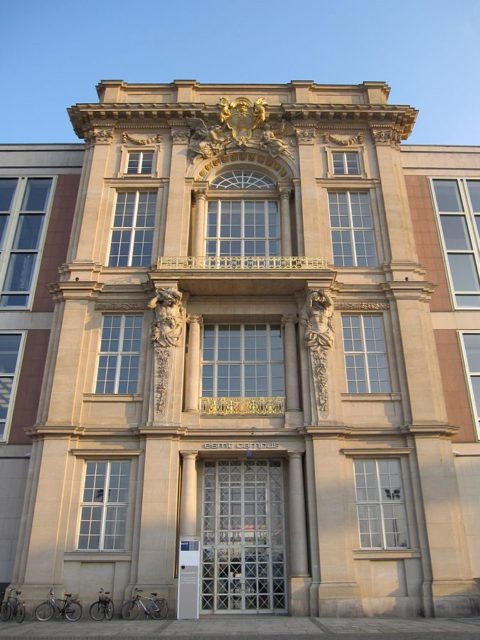
During the Weimar Republic, the palace was partly converted into a museum, though a large section was still retained for state business. During the time of the Nazis, the building stood mainly undisturbed for a number of years, until February 3, 1945, when it was hit by a bomb. Obtaining another hit on February 24th, it was left roofless and in ruins.
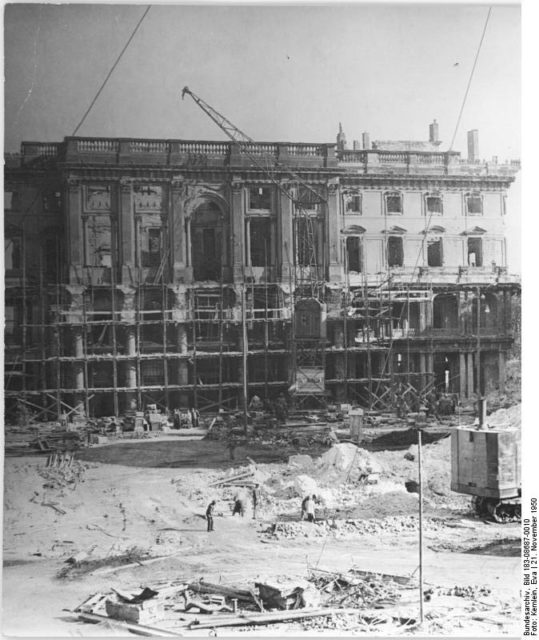
The building stood, ruinous and abandoned, for a number of years, during which time it was used as a backdrop in the filming of The Battle of Berlin. Walter Ulbricht announced in 1950 that the building was scheduled for demolition.
In just four months the palace that had been redesigned, rebuilt and decorated over the course of hundreds of years was gone. The only thing that wasn’t demolished was the balcony, from which Karl Liebknecht once spoke.
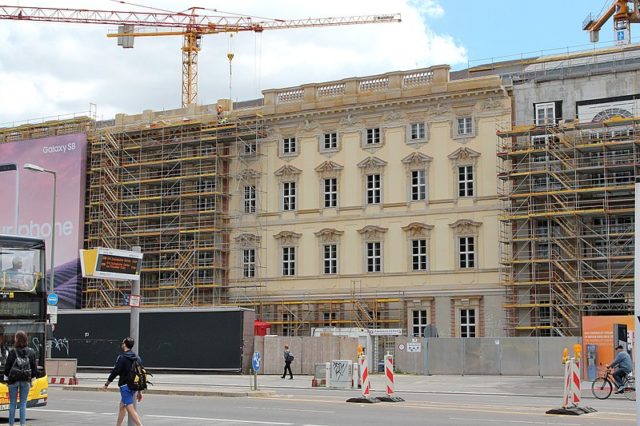
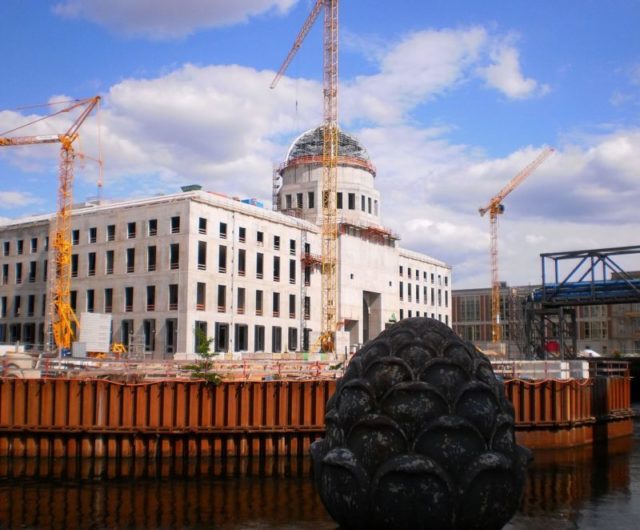
Following the reunification of Germany, it was decided that the whole palace should be rebuilt anew. The original exterior would be reconstructed on three sides, and the interior would be designed in a fresh, modern style.
The plan also includes the reconstruction of some historical rooms. Construction is underway, and the deadline for finishing the new palace is currently September 14, 2019.
